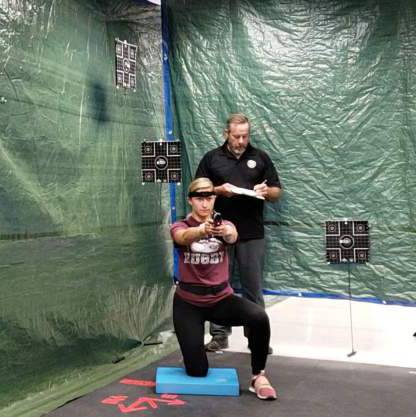Researcher partners with military to study soldiers’ movements using 360-degree video
Texas State University | March 6, 2020

Working with active duty military personnel at Joint Base San Antonio, Dr. Mark Lester is using 360-degree video to determine if how people move in the real world is similar to how they move in virtual environments.
“I became intrigued by recent developments in video technology and began to wonder if we could create a virtual environment from 360-degree videos of a physical environment and test whether people actually move similarly in both,” said Dr. Lester, an associate professor in Texas State University’s Department of Physical Therapy. “I was able to secure funding from the U.S. Army Medical Department Advanced Technology Initiative program to test these questions.”
Dr. Lester is a physical therapist with more than 25 years of experience in military healthcare and doctoral training in motor control and neuroscience. He joined the College of Health Professions at Texas State in the summer of 2019.
The team led by Dr. Lester created several tasks for study participants, which would assess postural control under static and dynamic conditions. An interplay between a person’s sensory and motor systems, postural control is necessary for static balance and dynamic activities, such as reaching for a book on a shelf or running hurdles at a track meet.

Muscle, joint and nervous system injury or disease can impair postural control and lead to diminished function, decreased physical activity and increased risk of falling. In the military, postural instability can reduce physical performance and combat effectiveness.
The more a person is exposed to various types and magnitudes of postural challenges, the better he or she learns how to adapt to new postural threats. In the military, optimizing postural control improves operational task performance, such as moving under fire or breaching an obstacle.
For Dr. Lester’s project, participants engage LED-lighted targets with a simulated rifle or pistol in a specified order. They engage targets while standing, kneeling, walking an hourglass-shaped course and walking a straight course. Participants perform each task in a physical environment and, on a separate day, perform the tasks in the 360-degree video VE played through a head-mounted display. Researchers are comparing movement patterns between environments using kinematic data captured from a suite of wireless wearable sensors worn at the head, torso, feet and wrists.
Dr. Lester said this concept has great potential for future research and practical application.
“Producing the 360-video VE is relatively inexpensive and it seems to replicate some real-world tasks well,” said Dr. Lester. “It also seems to provide a good medium to study skilled movements in a controlled setting. While more research is needed, leveraging 360-video content may provide a means for greater application of virtual training paradigms to learn new skilled movements or relearn movement patterns impaired by injury or disease.”
This story is based on an article that appeared in the Texas State University Office of Research and Sponsored Programs’ newsletter titled “Engaging Research.”
Share this article
For more information, contact University Communications:Jayme Blaschke, 512-245-2555 Sandy Pantlik, 512-245-2922 |